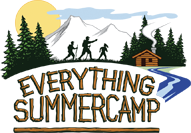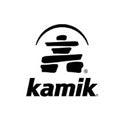What Goldilocks Can Teach Us about How Long to Stay at Camp?
 Goldilocks did three things right when selecting her preferred chair, porridge and bed: She kept an open mind, she experimented and she was involved in making her own choices. Wise parents adopt the Goldilocks model when deciding on session length. Let’s talk through each of these three factors.
Goldilocks did three things right when selecting her preferred chair, porridge and bed: She kept an open mind, she experimented and she was involved in making her own choices. Wise parents adopt the Goldilocks model when deciding on session length. Let’s talk through each of these three factors.
First, you and your child should keep an open mind. Some eight-year-olds are ready for a seven-week stay; some 14-year-olds will struggle with a two-week stay. Generally speaking, younger children and first-year campers begin with shorter session lengths (one or two-weeks) and build up to a month or more. However, there are plenty of exceptions. Ultimately, you’re trying match the camp and session length to your child’s interests, abilities and developmental level, rather than link any parameter of his or her stay to chronological age.
Second, experiment a bit. Arrange for your child to spend a few overnights and long weekends with friends or relatives. Let them get a sense of what they miss. (Everyone misses something.) Talk with them after this practice time away from home about how they coped with their normal pangs of homesickness. Coach them on the best ways to adjust to the separation from home. If they claim to have sailed through the separation with nary a thought of home, they are probably lying but still showing healthy confidence.
(Note: Most parents are committed to preventing severe homesickness. That’s why the American Camp Association created a 25-minute homesickness prevention DVD. The Secret Ingredients of Summer Camp Success is actually a DVD-CD set that lowers the intensity of first-year campers’ homesickness by 50%, on average. Consider making this $10 investment in your child’s happiness. The set is for sale on EverythingSummerCamp.com or by calling (800) 535-2057.)
Third, involve your son or daughter in the decision about how long to stay at camp. Some of the choice will be dictated by family finances, of course. Whatever flexibility is left should be largely up to your child. Ownership over the decision about how many weeks to attend camp goes a long way toward promoting good adjustment to the separation from home. Said differently, children who feel forced to spend a certain amount of time away from home are more likely to become intensely homesick.
Of course, Goldilocks didn’t get it all right. After all, she broke into someone else’s house without permission, a fact not taken lightly by the three bears. Camp has an entirely different premise. Not only are the chairs, meals and beds perfect for kids of all shapes and sizes, the staff will welcome their presence and work diligently to help them feel part of the family.
Enjoy the summer!

Dr. Christopher Thurber





